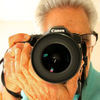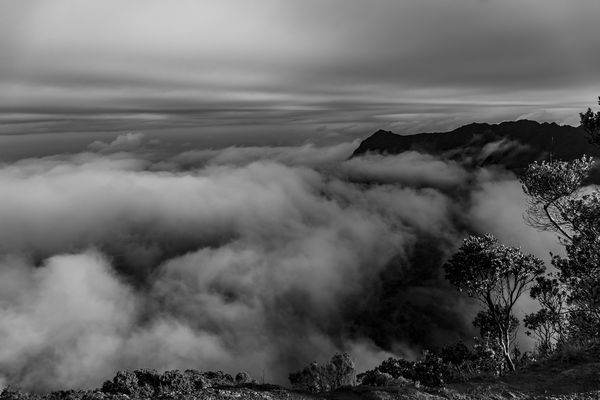Waterfall cream - Techniques?
Apr 7, 2019 09:03:55 #
The top photo may be impaired by haze, but it also looks like the focus was on the dirt in the foreground.
Apr 7, 2019 09:48:01 #
mizzee
Loc: Boston,Ma
I would use a plain old 6 or 10 stop Nd. I tried the variable Nd but moisture got in between the elements and I couldn’t get rid of it. Also make sure your tripod is plenty sturdy!
Apr 7, 2019 10:54:03 #
Bill Munny wrote:
Might try this method, which will cause a lot of g... (show quote)
Great idea Bill. I am going to try that.
Apr 7, 2019 10:59:02 #
Apr 7, 2019 11:26:05 #
Excellent set the water looks good i use a ND2 and dehaze the 1st
you're on the right track look on u tube
chuck
you're on the right track look on u tube
chuck
Apr 7, 2019 12:52:00 #
crazydaddio wrote:
Will try it....I would think that the wind would need to be 0 with leaf movement etc wrecking the bracketing. I suppose you could go into photoshop and mask the water area with the bracketed shots and then just use one of shots to do the unmasked areas around the water so the tree/leaf/cloud movement would be eliminated...
When you set up the stacking, check mark the "remove ghosting" box. That will help alleviate leaf movement and wind movement. You want the water movement so try it without the ghosting box checked also. See which is more desirable to you.
Apr 7, 2019 13:29:16 #
Use the lowest ISO your camera provides and if the ND filter gives you some trouble use a polarizing filter. Slow shutter speed and steady the tripod.
Apr 7, 2019 14:07:14 #
crazydaddio wrote:
Looking for some techniques for creating that crea... (show quote)
I used to shoot long exposures with tripods and ND filters; no more!
I now just shoot lots of normal exposures (subs), and align and stack them. Depending on the number of subs you use in your postprocessing you can pretty much get any final result you want, from rough'ish to totally smooth.
You also don't have to worry about your human target moving during a long exposure; simply overlay the best sub on the final image.
This approach is also very useful if you have a lot people milling around in front of your target. Space your subs a few seconds, or even minutes apart then use HDR to process your image. The people in front of your target are considered 'ghosts' and removed from the final result; beautiful.
I use Affinity Photo for all my stacking and HDR processing.
bwa
Apr 7, 2019 15:12:34 #
rond-photography wrote:
I have a question first of all - did you shut off ... (show quote)
IS was on I believe but I may have shut it off as I was trying different methods (IS on/off, F8-F18, playing with ISO/SS/ND gradient to see which combo was most effective for getting the blur and still getting the exposure I wanted.
It was a hazy day and yes, its several miles away across the canyon. There was haze and that for sure could have affected the AF. (I tried Liveview and Mirror down AF with triggers and also withg 10sec timer on the shuttger release.
...and I like the fog too....
see photo I got on the same day at the top of the Na Pali coast :-)
....will look into the tripod upgrade I think...
Apr 7, 2019 15:16:52 #
tcthome wrote:
Sometimes keeping your hand with slight downward pressure on your set up helps with vibration on a tripod. I think Moose Peterson ( & maybe Steve Perry) have vids on you tube on this subject. I gave tried this with a longer lens & it does work.
Thanks.
I do this with my monopod when shooting sports/BIF as iit helps me isolate the target but thought that my own body movements even with the downward pressure would mess-up a longer exposure shot on a tripod.
(Works great for trying to find the receiver in a football game through the viewfinder and getting the spot-AF on the target....wasnt sure it would be as good given the lack of sturdiness of the travel tripod. I will try it next time nonetheless....can't hurt and I have lots of "film" :-)
Apr 7, 2019 15:18:07 #
mizzee wrote:
I would use a plain old 6 or 10 stop Nd. I tried the variable Nd but moisture got in between the elements and I couldn’t get rid of it. Also make sure your tripod is plenty sturdy!
hmmm...will check for moisture.....never thought of that...
Apr 7, 2019 15:46:49 #
Go to Steve Perry's website or search YouTube for his video on using a tripod. He also has a video on waterfalls i believe. Moose Peterson uses the same technique. Sturdy Tripod light downward pressure on the lens right above the tripod.
Buy the best and sturdiest tripod you can fund. Anything less will disappoint you, just be prepared to carry the weight.
Chris
Buy the best and sturdiest tripod you can fund. Anything less will disappoint you, just be prepared to carry the weight.
Chris
Apr 7, 2019 16:27:37 #
Chris Hayes wrote:
Go to Steve Perry's website or search YouTube for his video on using a tripod. He also has a video on waterfalls i believe. Moose Peterson uses the same technique. Sturdy Tripod light downward pressure on the lens right above the tripod.
Buy the best and sturdiest tripod you can fund. Anything less will disappoint you, just be prepared to carry the weight.
Chris
Buy the best and sturdiest tripod you can fund. Anything less will disappoint you, just be prepared to carry the weight.
Chris
It's a good technique and I use it on my monopod when shooting sports/wildlife (I dont have a Gimbel/Gitzo setup....although all my research and this thread is convincing me I will have to spend the $ to get a properly stabilized setup to shoot long exposure)
Rather than speculate (like I did to the previous poster), I watched Steve Perry's video on the subject and he has confirmed for me that the "downward pressure" for a long lens is for shooting sports/BIF/or non-moving wildlife stabilized down to about 1/15 sec @600mm. I am shooting at around 0.3 to 2sec...not exactly "long exposure" but probably longer than I want anything to be "touching the setup" ....whether my hand, eye socket, fingers on the shutter, wind etc. Hence I use Mirror-up with trigger or mirror-up with 10sec delay. (Focus in Liveview and shoot in Non-live view mode so I dont need to touch the setup to trigger the photo).
...and SteveP uses IS (or VR in his nikon case) to further help stabilize in the case of shotting wildlife.
The IS activates at half press but is otherwise off, if shooting long exposure, does the IS turn off after 2 sec in the long exposure? I can see this having a negative effect unless the IS stays on between the shutter opening and closing...I will need to research that unless someone has the answer.
Apr 7, 2019 16:37:21 #
Agreed.
Steve is a wildlife shooter and a such his advice is best for such situations. Obviously for landscapes a locked down ball head or gimbal is much better. The point i was originally making is its the tripod that forms the basis for all such photography. I copied Steve with his Gitzo/Wimberly set up and have been very happy with it. I use a larger ball head for fixed landscape shots, when i do them.
I love the Gitzo, but its a heavy and cumbersome beast to lug around, so it gets left at home unless i am traveling by car. Air travel leaves the Gitzo left at home.
I just confess when i use the Nikon 200-500 i leave the VR on and have not seen any issues with it on. Usually its just that i forget to turn it off.
Chris
Steve is a wildlife shooter and a such his advice is best for such situations. Obviously for landscapes a locked down ball head or gimbal is much better. The point i was originally making is its the tripod that forms the basis for all such photography. I copied Steve with his Gitzo/Wimberly set up and have been very happy with it. I use a larger ball head for fixed landscape shots, when i do them.
I love the Gitzo, but its a heavy and cumbersome beast to lug around, so it gets left at home unless i am traveling by car. Air travel leaves the Gitzo left at home.
I just confess when i use the Nikon 200-500 i leave the VR on and have not seen any issues with it on. Usually its just that i forget to turn it off.
Chris
Apr 7, 2019 21:38:22 #
If you want to reply, then register here. Registration is free and your account is created instantly, so you can post right away.








